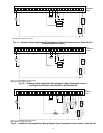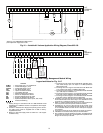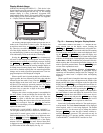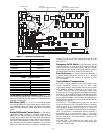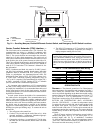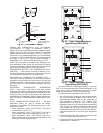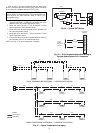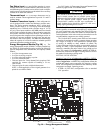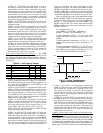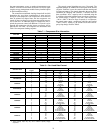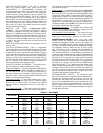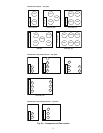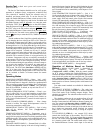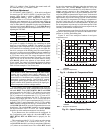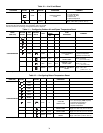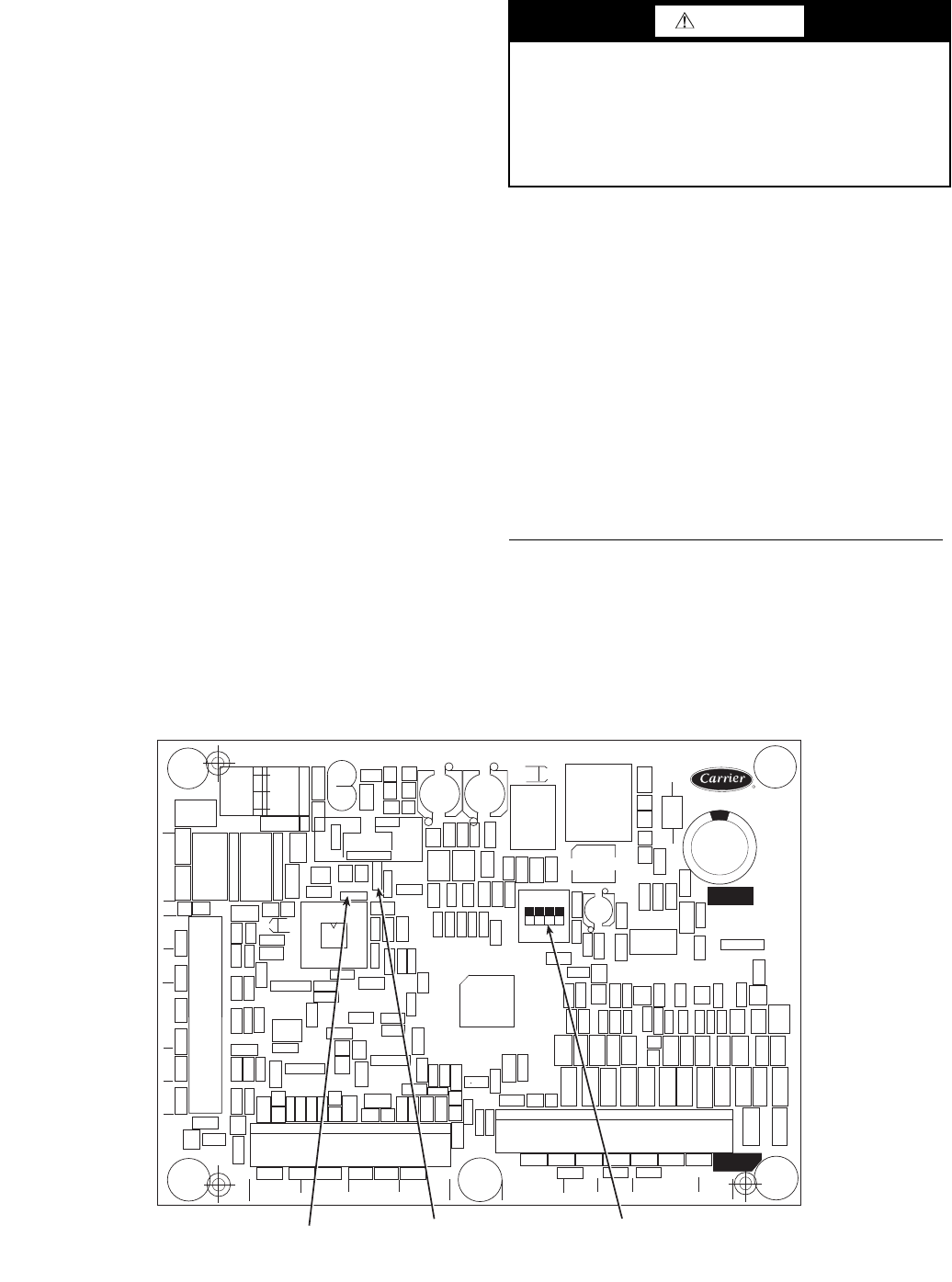
23
Fan Status Input — A proof-of-fan operation is recom-
mended and needs to be field installed in the indoor unit. Sev-
eral different types of switches can be utilized, such as a differ-
ential pressure switch located across the indoor fan or auxiliary
contacts on an indoor fan contactor.
Thermostat Input — A two-stage thermostat can be
used for constant volume applications to provide Y1 and Y2
cooling inputs.
Pressure Transducer Inputs — Each refrigerant cir-
cuit is equipped with a suction and discharge pressure trans-
ducer. The suction pressure transducers have a yellow body
with a pressure range of -6.7 to 420 psig while the discharge
transducers have a red body with a pressure range of 14.5 to
667 psig. These inputs connect to the MBB (main base board)
and are used to monitor the status of the unit and to ensure the
unit operates within the compressor envelope. The transducers
are used to protect the compressor from operating at too low or
too high of a pressure condition. In some cases, the unit may
not be able to run at full capacity. The MBB will automatically
reduce the capacity of a circuit as needed to maintain specified
maximum/minimum operating pressures.
Energy Management Module (Fig. 28) — The
energy management module (EMM) is a factory-installed op-
tion (FIOP) or field-installed accessory used for the following
types of temperature reset, demand limit, and capacity control
features:
• 4 to 20 mA temperature reset
• 4 to 20 mA cooling set point
• 4 to 20 mA desired capacity set point
• 4 to 20 mA demand limit
• Discrete inputs for 2-step demand limit (requires field-
supplied dry contacts capable of handling a 24 vac,
50 mA load)
• Discrete inputs for units with dual thermostats
NOTE: A field-supplied 4 to 20 mA signal generator is re-
quired for use with the EMM.
See VAV Supply Air Temperature Reset and Demand Limit
sections on pages 29 and 31 for further details.
Control — When mechanical cooling is required, the MBB
has the capability to control the unit capacity by staging multi-
ple scroll compressors and controlling the digital scroll com-
pressor operation. The control also checks on various other op-
eration parameters in the unit to make sure that safeties are not
exceeded and the compressors are reliably operated.
The ComfortLink™ control system offers two basic control
approaches to mechanical cooling; constant volume operation
for 2 stages of cooling or VAV operation for multiple stages
of cooling. In addition to these methods of control, the
ComfortLink control offers the ability to run multiple stages of
cooling for either a space temperature sensor or thermostat
control by controlling the unit to either a low or high cool set
point. The control type Configuration OPT2 C.TYP de-
termines the selection of the type of cooling control as well as
the method for selecting a cooling mode.
SETTING UP THE SYSTEM
Machine Control Type (
Configuration OPT2 C.TYP)
— The most important cooling control configuration is located
under Configuration OPT2. This configuration defines the
method and control source responsible for selecting a cooling
mode. The configuration also determines the method by which
compressors are staged. Control types are:
• C.TYP = 1 (VAV-RAT) configuration refers to standard
VAV operation.
CAUTION
Care should be taken when interfacing with other manufac-
turer’s control systems due to possible power supply
differences, full wave bridge versus half wave rectification.
The two different power supplies cannot be mixed.
ComfortLink™ controls use half wave rectification. A
signal isolation device should be utilized if a full wave
bridge signal generating device is used.
CEBD430351-0396-01C
TEST 1
CEPL130351-01
PWR
TEST 2
J1
J2
J4 J3
J5
J6
J7
LEN
STATUS
RED LED - STATUS
GREEN LED -
LEN (LOCAL EQUIPMENT NETWORK)
ADDRESS
DIP SWITCH
Fig. 28 — Energy Management Module



